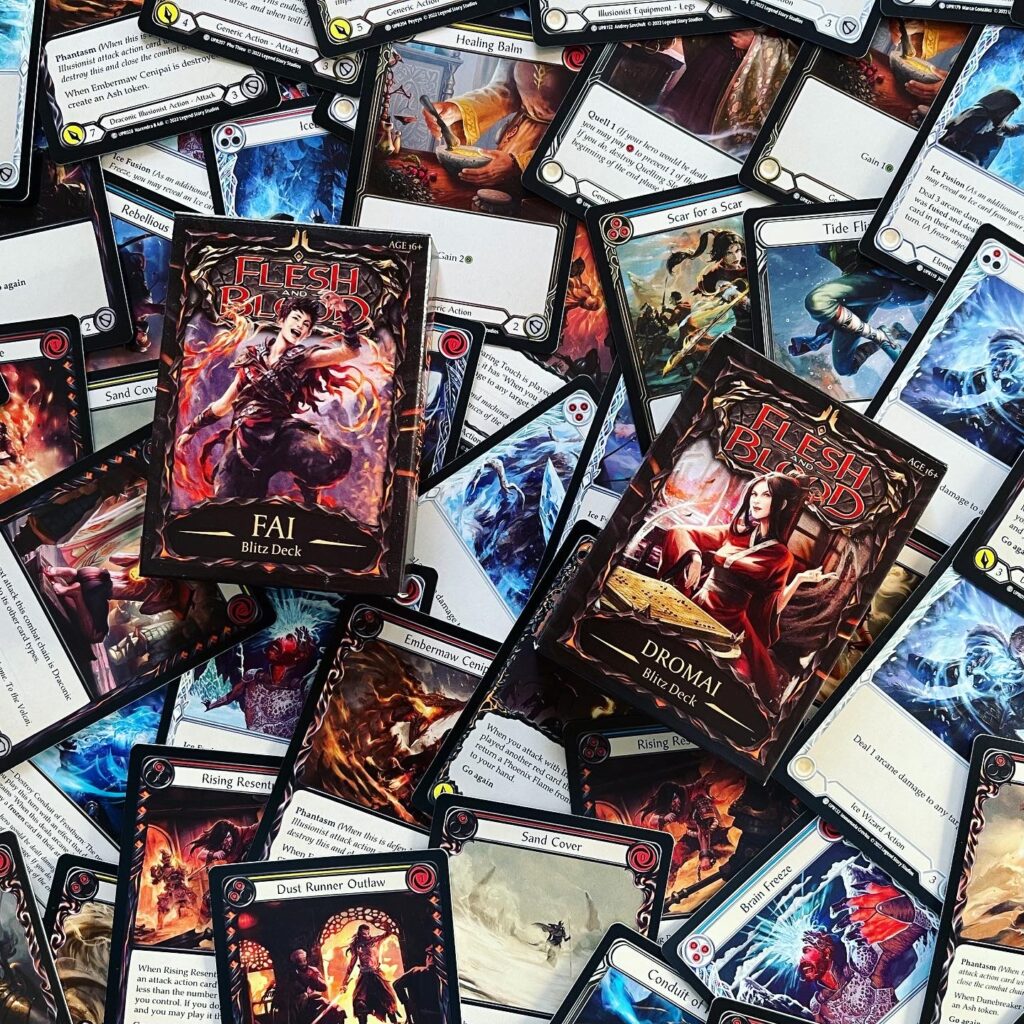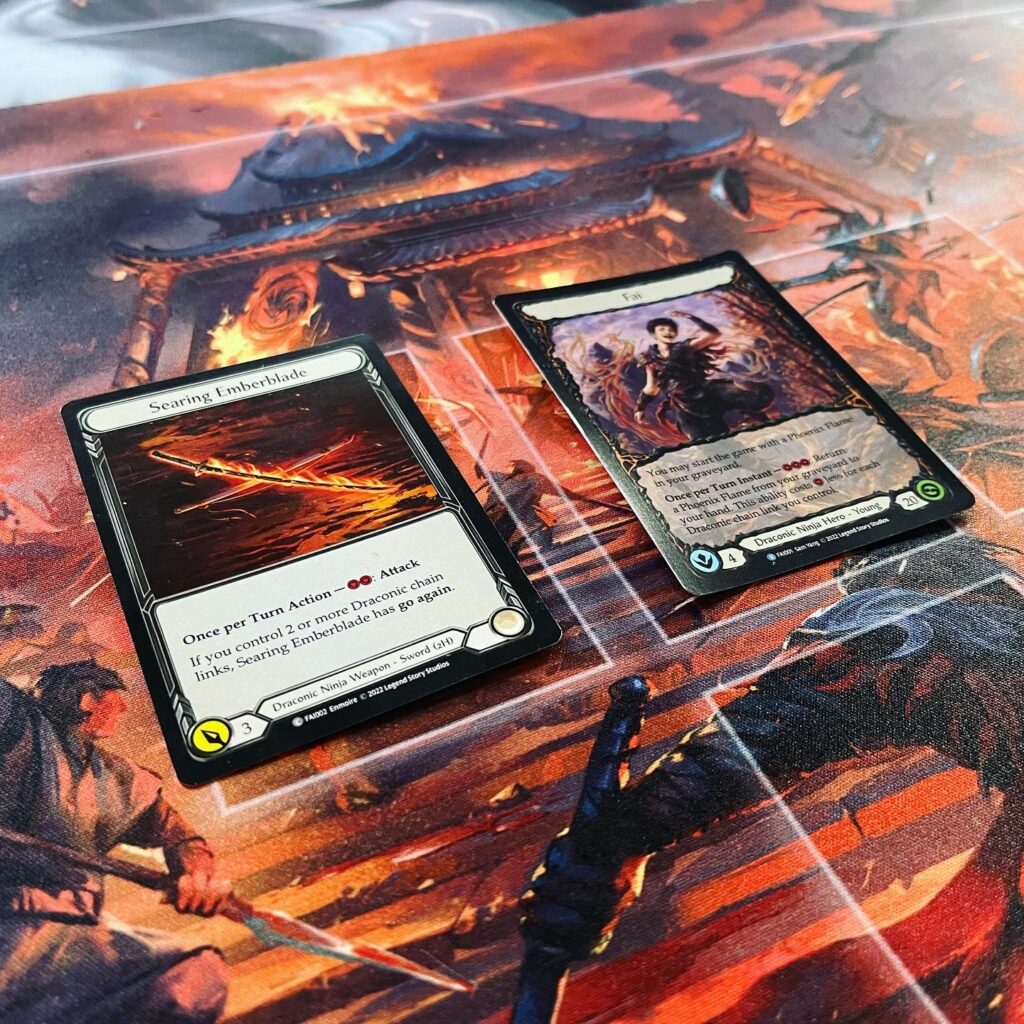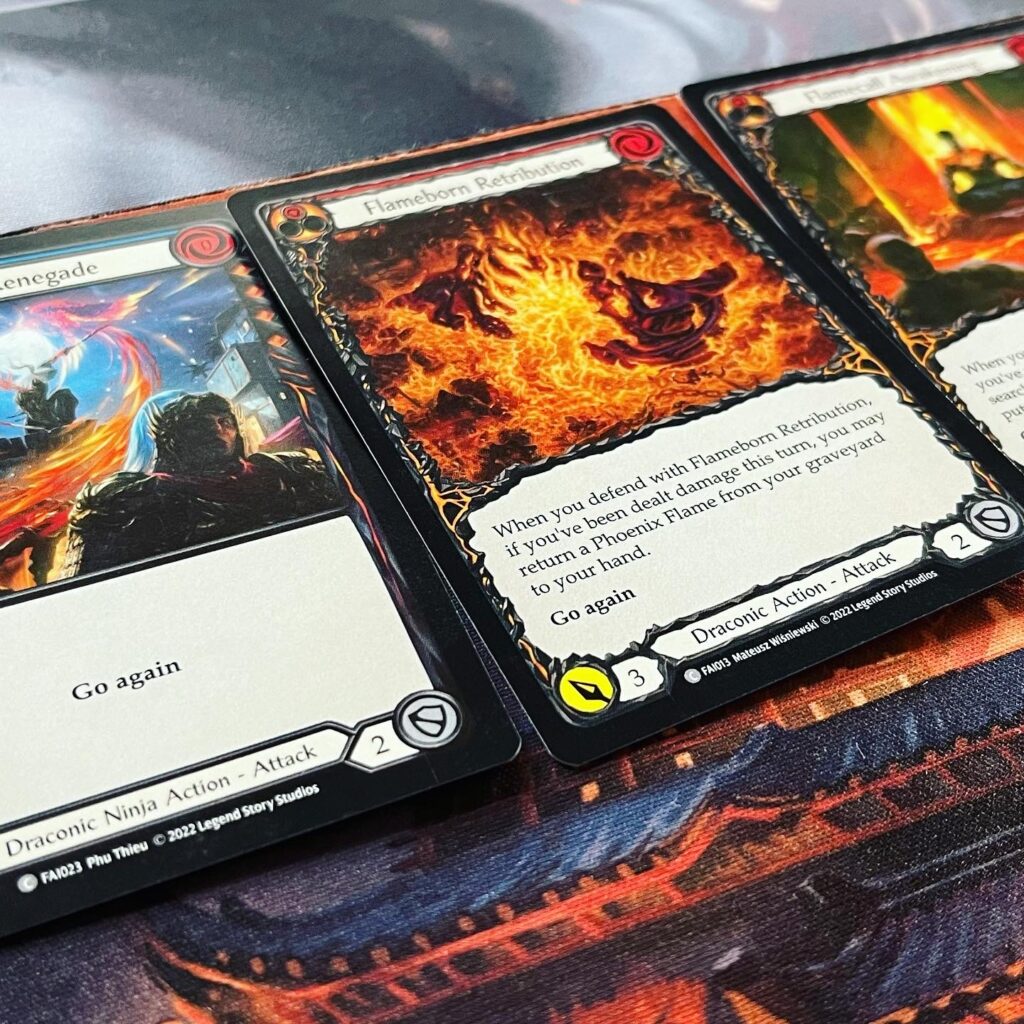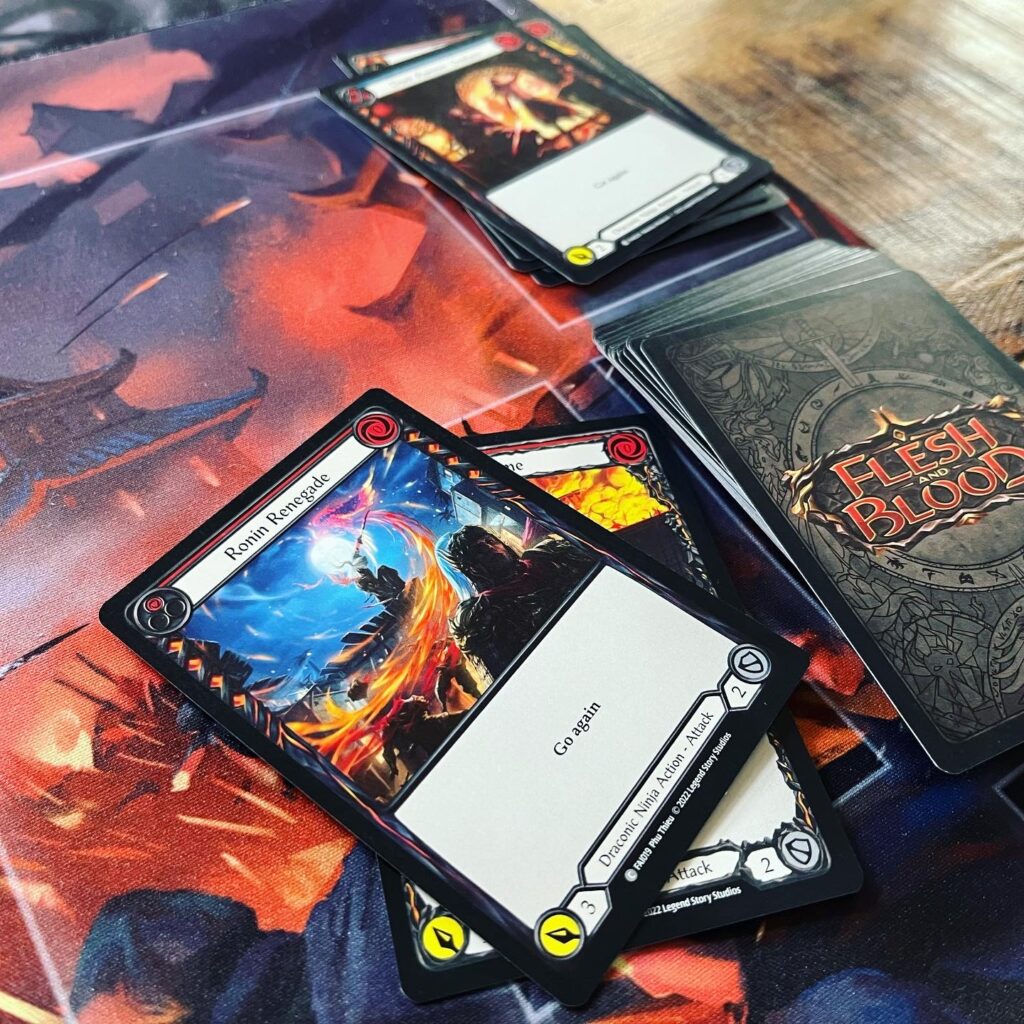Carcassonne, Boonanza and Pandemic are probably the games that (re)ignited my love for (modern) board games when I was in uni, but I have loved games since childhood. I used to play board games with my eldest sister and my friends, but I also played a lot of Stratego with my mother – who, by the way, insists she doesn’t like games at all. My really serious love for games started about 20 years ago as a (pre)adolescent discovering a new hobby: Trading Card Games/Collectible Card Games (TCGs/CCGs). As a kid, I naturally collected the original and (now) vintage sets of Pokémon cards, but I actually only learned how to play the corresponding game a few years ago. As an 11/12-year-old kid, Yu-Gi-Oh! was a huge hype and the cards in particular sold like hot cakes. Like many friends, I collected the cards, played the game and a little later I even started building and maintaining a website about the anime and the card game. I know: I was a downright nerd! I can even remember travelling to Schiphol Airport – during the heyday of this craze – to compete in a tournament. Much to my surprise, I was one of the youngest players and it was mostly adults of all shapes and sizes playing this game. I was eradicated from the tournament early on after an overwhelming loss during the first round against a man in his 30s with a deck full of the best cards. The merciless loss felt like an episode of the anime.

The Yu-Gi-Oh! tournament was an eye-opener that my hobby was not just for my peers, fortunately this did not ruin my enjoyment of the game. I became (even more) interested in other card games. Around the time I got to know Yu-Gi-Oh! as more than just a children’s game, I also came into contact with the biggest and best-known TCG: Magic the Gathering. I regularly visited the local games shop. In this shop I bought my packs of Yu-Gi-Oh! and also Magic the Gathering. I also bought sleeves, folders and deck boxes to keep my cards safe and I even bought singles of cards. I was infected with the TCG virus. I even had a subscription to a Dutch-language magazine about these collectible card games. Fortunately, I never paid the exorbitant amounts that some hobbyists spend on their hobby. The price of the hobby has also been one of the reasons for me to never getting involved into Magic the Gathering too much. Nevertheless, I regularly have the itch to open some packs as it is a dynamic game.
TCGs are a social activity: from opening packs to trading cards and physically getting together to play the game, and that is exactly the focus of the TCG Flesh and Blood.
In Flesh and Blood
The name Flesh and Blood might, at first glance, make you suspect that you are about to play a horror game or a card game version of the classic film Flesh + Blood with Rutger Hauer, but neither is the case. The title Flesh and Blood refers to the makers’ philosophy: a game that people play with each other in the flesh (i.e. in flesh and blood). A social activity in a local game shop. The creation and further development of the game keep that idea at its starting point.


Flesh and Blood is published by Legend Story Studios. This studio is based in the land of Hobbits, Orcs and wizards: New Zealand, specifically in Auckland. LSS itself states that its mission has been to change the global TCG industry. According to LSS, TCGs – rightly so, by the way – are an incredible way to bring people together as a community. According to LSS, these games transcend barriers of age, race, religion, gender and even spoken language, through a common language of “playing great games”. By the way, 12-year-old Daniel can emphasise this observation based on my personal experiences during the Yu-Gi-Oh! tournament.
LSS puts the Friendly Local Game Store (FLGS) at the forefront of the company’s strategy. Indeed, it is in these local game shops that the TCG hobby is practised and preached. Here, players come together to buy and trade their cards and to play the game with like-minded people, allowing local TCG communities to (continue to) exist. Also at my local game shop the Spelkwartier in Arnhem, card game enthusiasts regularly gather to play their favourite TCG, including, of course, Flesh and Blood.
Formats and Blood
There are several ways to play Flesh and Blood. Fans of Magic the Gathering or other TCGs will find some of the game formats familiar. These different (official) formats we will explain in more detail below so that each format gets the attention it deserves. Like any community-driven TCG, there are of course plenty of fan-made formats. The basic principles for each format of Flesh and Blood are basically the same. In Flesh and Blood, players open packs and use their collection of cards to assemble a deck in the hope of defeating other players’ chosen hero and deck. Which type of hero is played with depends on the format. Young heroes are used for the faster formats while their older versions are used in longer battles that require some experience.
Flesh and Blood has different gameplay formats. In Blitz, players with a smaller deck (exactly 40 cards) play a quick battle that usually lasts between 10 and 20 minutes. This makes Blitz perfect for playing multiple games at your local game shop. In Classic Constructed, players play with more cards (80+) making pots take longer, but of course still fast paced. In Commoner, players play with a small deck consisting only of common cards, so the barrier of entry is low for any player (even those with smaller numbers o their bank accounts). There are also variants for more than two players such as pit fight and team constructed.



As with other TCGs, my favourite format is obviously a booster draft. Players collectively open a number of packs, choose a card and pass on the rest of the cards until everyone has a small collection of new cards. With the available cards, players have to assemble a small deck. This creates interesting dilemmas and strategies, and through this you get to know a new set/release perfectly. Of course, standalone assembled decks are also available, allowing you to start playing immediately. Many local game shops even have free demo decks available, allowing you to try out the game and the different formats.
By putting together a personal deck of cards, players try to match cards to each other to create a dynamic synergy between the cards tailored to the player’s strategy. What I describe in the previous sentence is of course one of the strengths of TCGs and also at a pitfall at the same time. On the one hand, this allows players to create a personal gaming experience in many different ways. Your deck is actually ‘your’ deck, tailored to your play style, preferences, themes and you name it. It feels personal; something you made yourself. TCGs like Flesh and Blood are therefore infinitely varied especially since new cards, playing methods and rules appear with some regularity. On the other hand, certain cards and strategies are sometimes dominant making certain cards popular and scarce and thus very pricey. Many TCGs are often classified as pay-to-win. Many TCGs, which I won’t specifically call out in this article, therefore rely on this factor, as well as the ‘addiction’ of their players, in deviously commercial ways. Of course, this is also a possible pitfall for Flesh and Blood, but unlike other card games, despite obviously not being a cheap hobby, Flesh and Blood is still not a pay-to-win due to its clear balancing. Incidentally, this is also part of the philosophy of the creators of Flesh and Blood that I mentioned in the intro as these games should be an accessible and social activity. Of course there are rare cards and there is a ‘secondary’ market where players trade cards, but buying certain cards doesn’t guarantee your victory and it doesn’t lock players out.
Gameplay
What about the gameplay? In Flesh and Blood, players have a deck built around a character. Players set up the game with their chosen character, weapon(s) and equipment. The gameplay is clear. Quite generally speaking, players take turns attacking each other with their weapons and/or using action cards. Action cards can be played by “pitching” other (action) cards. By pitching, players discard cards in a certain way to pay the cost of their played action cards. This creates interesting dilemmas during the game as you have to choose what you will pitch certain cards for.



The age-old TCG adage also applies to Flesh and Blood: reading the card explains the card. Flesh and Blood has many types of different types of (action) cards. By following and executing the text on the card, attacks and defence actions are performed. Attack and defence actions are placed and dealt in a “chain”, inflicting damage based on the difference in value. Depending on the cards played, you may continue playing actions or your turn is over. Play continues in different sets of turns until a player reaches 0 health and the opponent is declared the winner (in a 1 vs 1 mode at least).
Concluding
Flesh and Blood is a dynamic TCG with fast-paced and highly interactive gameplay. The game features huge amounts of beautiful artwork and a clear theme and build-up of its world. The game is full of action and reaction, keeping players on edge. As a (sporadic) fan of TCGs, I very much appreciate the philosophy behind Flesh and Blood. The bond with the game shop is very obvious. So, run to your local games shop quickly to try out Flesh and Blood!




